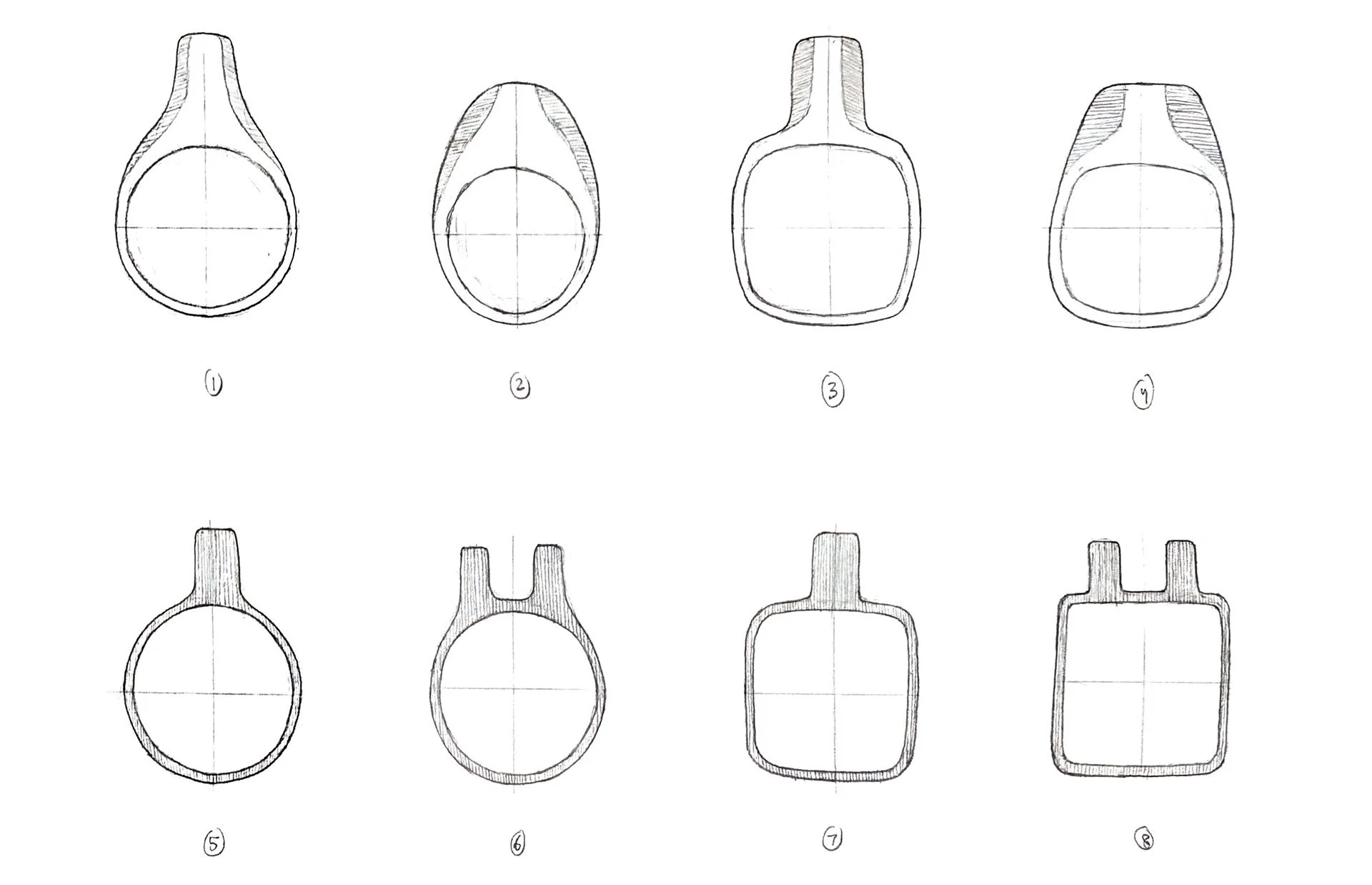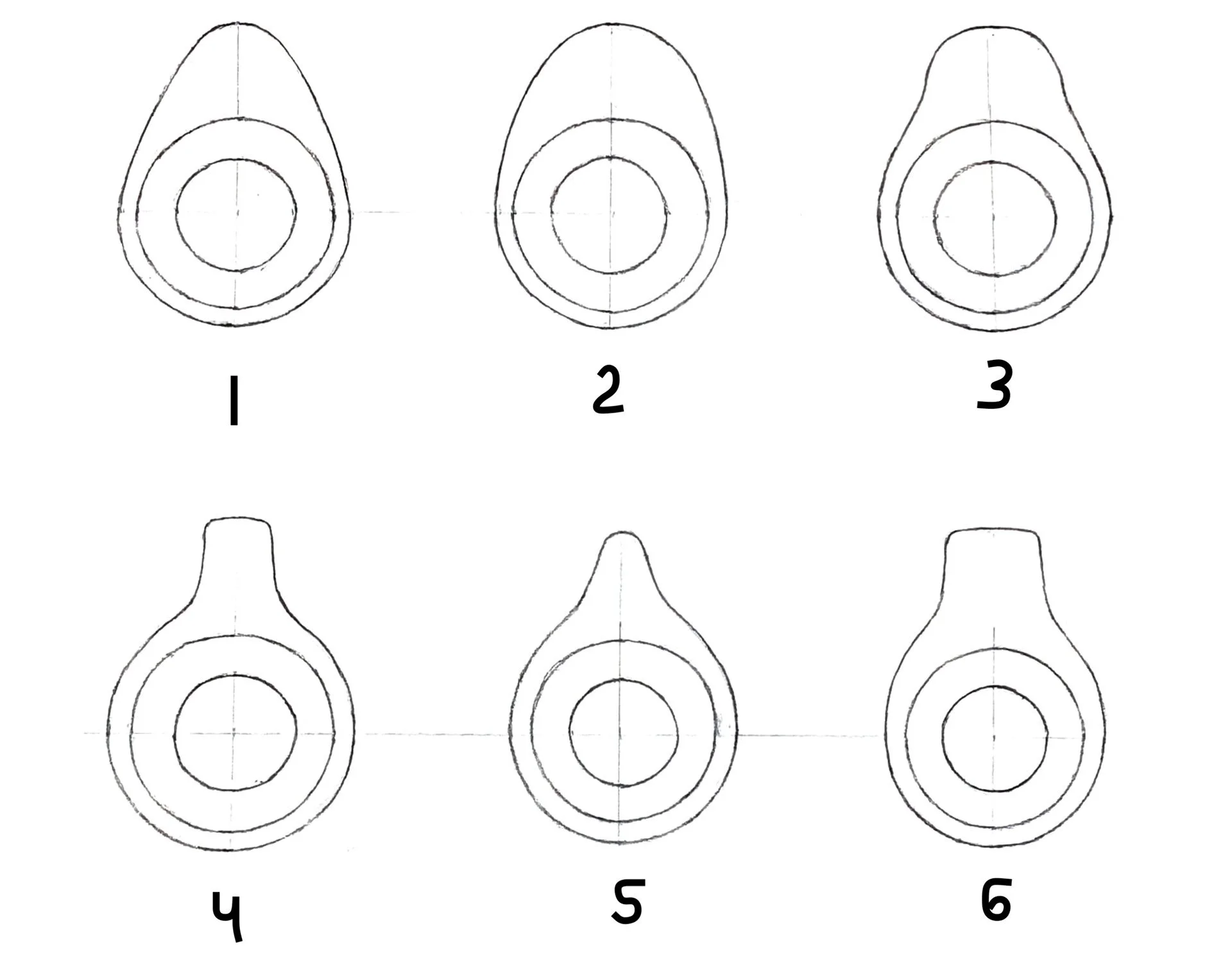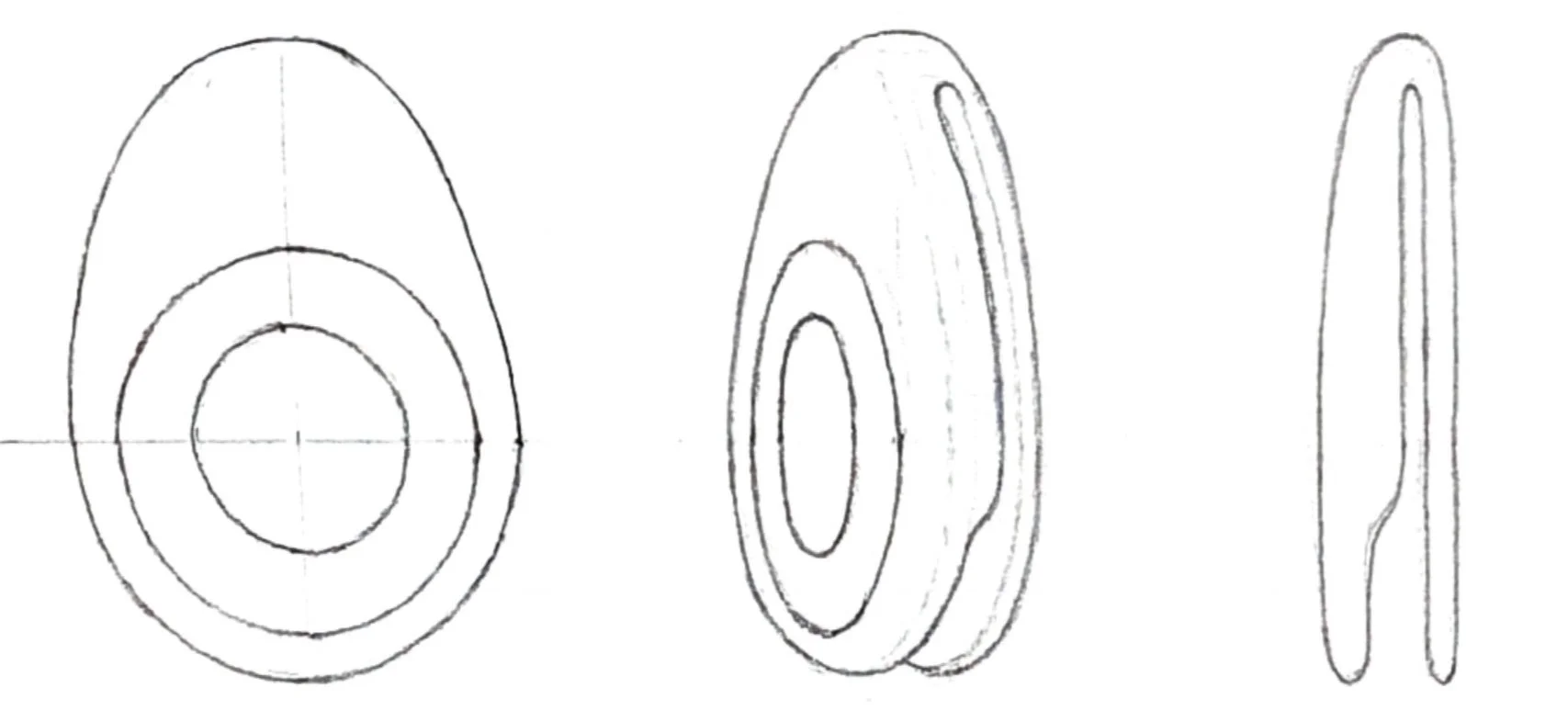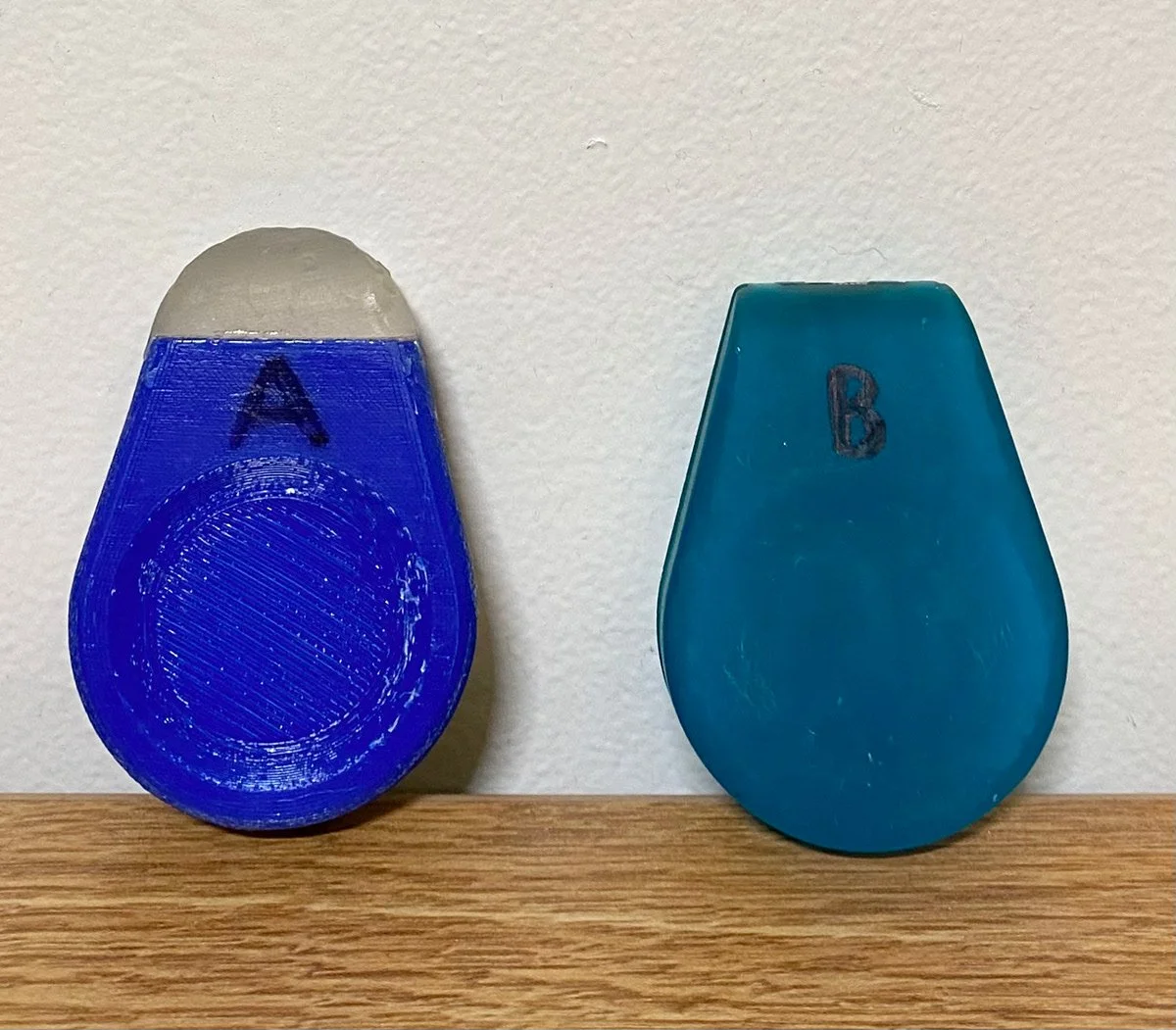KLIP Tech
a runners’ safety device (2021)
KLIP Tech is a runners’ safety device that provides peace of mind to users in unfamiliar or dangerous urban settings by sending out the user’s location to first responders and trusted contacts. The hardware team was tasked with designing the mechanical casing and electrical layout. As the industrial designer, I developed the device geometry and user experience through design surveys and user tests with the Northeastern running club.
Process
As the industrial designer, I was responsible for developing the physical appearance and user experience of the device. The initial design the clients brought in for reference had a large main button, a flat rectangular surface, and an indented back for security.
The clients specified that the device must be discreet for safety purposes and simple for intuitive navigation. Although the design significantly evolved over the course of the semester, I kept the main components such as the large central button, discrete look, and minimal face constant.
reference model from client
Figure A – design survey options
Figure B – design 2 iterations
To decide between a rectangular and round device shape, I conducted a design survey. A table of designs with varied hinge and grip features was created for each shape, shown above. The first row had thicker hinge designs and had indented surfaces for grip, shown by the shaded regions. The second row had a ribbed texture for grip all over the device surface.
The results of the survey revealed that rounded shapes were favored over rectangular ones in aesthetic appeal. The single strap design was favored over the double strap due to its perceived security. Overall, design 2 in figure A was the top choice. Next iterations of design 2 were produced in figure B, from which design 2 was selected and modeled in Fusion360.
design 2 sketch
design 2 Fusion360 model
All participants were within the age range of 18 to 25 years old. The most significant data collected in this survey was that 100% of participants bring their phone on runs, 100% felt unsafe while running at least sometimes, and 100% do not currently have a safety plan. All participants said they would consider bringing an additional device for safety purposes on runs.
Next, I designed a user test to decide between clasp mechanisms and refine the user experience. First, I sent out an interest form to the Northeastern Runners Club to gather participants and collect relevant information, including their gender identity, running habits, and current safety precautions. The user test had a total of three participants, two of which identified as female and one identified as male.
user test prototypes – A (magnet clasp), B (spring hinge)
Two prototypes were prepared for the mechanical design part of the test, shown above. Prototype A had a magnet clip and a flexible hinge while prototype B had a spring hinge. The test consisted of three surveys—A setup, B setup, and the post-run questionnaire. Each participant had a time limit of two days to run with each prototype and complete the surveys.
Based on the post-run questionnaire results, B was easier to clip on and was more comfortable wile running. All participants said that they are more likely to use B again over A. Although B proved to be more secure than A while running, users were hesitant about its hinge strength during setup. This issue was resolved by adjusting the spring type.
Outcome
Based on feedback from the user test, the final device was a version of prototype B with an improved spring hinge, a grip feature, and electronic integration. Due to client’s preference, there was no power switch in the final product.
In addition to the main button and the charging port, the device will have a vibration feature as a method of user notification when the button is activated. Vibration was chosen over other options, such as LEDs, due to its discreet nature.
final KLIP device render








